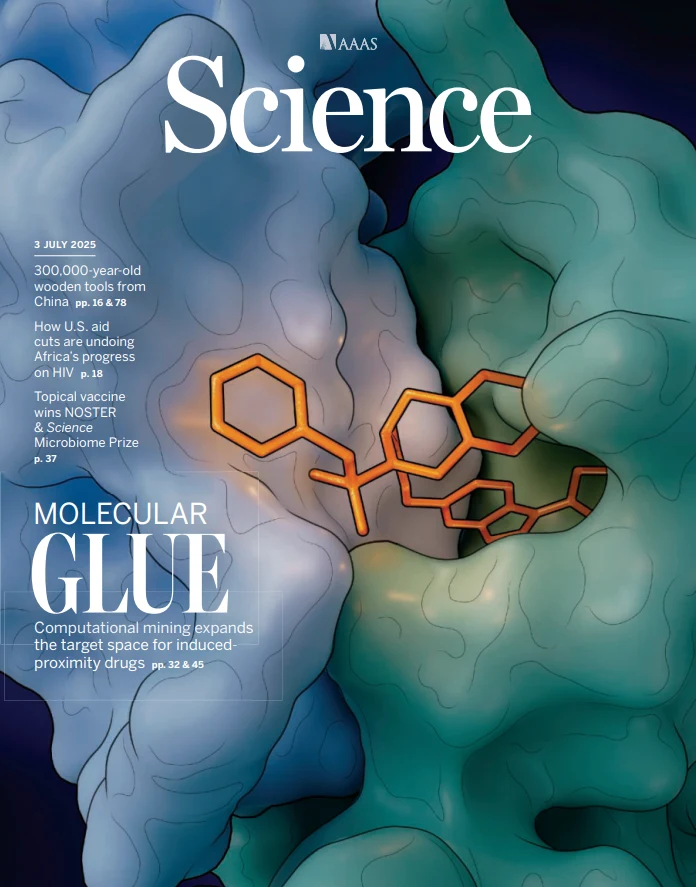
📰 About Science Magazine
Science Magazine, published by the American Association for the Advancement of Science (AAAS), stands as one of the world’s most prestigious sources of cutting-edge scientific research and commentary. With a global readership exceeding one million, it serves as a vital platform for scientists, educators, and policymakers by delivering peer-reviewed articles, insightful news, and expert analysis across a wide spectrum of disciplines—from biology and physics to climate science and technology. Its commitment to advancing science and promoting its role in society is reflected in its rigorous editorial standards and its mission to foster public engagement with scientific discovery
Science Magazine: A Quick Look Inside
This issue of Science magazine delivers a fascinating snapshot of breakthroughs and critical discussions across the scientific landscape:
- Ancient Discoveries: Unearth the secrets of 300,000-year-old wooden tools from China, providing new insights into early human history.
- Global Health Imperatives: Examine the significant impact of U.S. aid cuts on Africa’s ongoing fight against HIV, alongside promising medical innovations.
- Revolutionary Medicine: Explore the future of therapeutics with a deep dive into molecular glue for drug development and the award-winning topical vaccine based on microbiome science.
- Cutting-Edge Technology: Discover ingenious solutions like devices that pull water out of thin air, and explore advancements in gene expression, centromeres, protein degraders, and quantum information.
- Environmental Insights: Understand the alarming connection between glacial melt and earthquakes, highlighting the urgent effects of climate change.
- Policy & Society: Delve into discussions on topics such as avian influenza’s spread in US poultry and the importance of supporting scientists who work abroad.
From ancient history to the frontiers of health and technology, this issue offers compelling reads on the most pressing scientific advancements and challenges.
Science – Volume 389, 3 July 2025
- Language: English
- Total of pages: 100 pages
- File format: PDF
- File size: 52 MB
IMPORTANT NOTE!
All contents and images featured on FreeMagazines.online are copyrighted to their respective owners. We do not claim ownership of any visual or written content unless explicitly stated. It is just for educational and knowledge purposes, only to help the needy.
Innovations and Policy at the Forefront of Science & Technology: A Comprehensive FAQ Collection
Recent decisions by the Trump administration to dismantle the U.S. Agency for International Development (USAID), a primary funder of the President’s Emergency Plan for AIDS Relief (PEPFAR), are severely threatening years of progress against HIV/AIDS in Southern African countries like Eswatini and Lesotho. These nations, which have the world’s highest HIV prevalence, have seen significant reductions in new infections and AIDS-related deaths thanks to over $1 billion in PEPFAR aid over 20 years. The cuts have led to immediate cessation of critical services like home visits for HIV testing, transport for patients to clinics, and comprehensive follow-up for children and teenagers. This disruption has caused mass layoffs of healthcare workers, created staff shortages, complicated access to antiretroviral drugs, and put the rollout of new, long-lasting preventative drugs (like injectable lenacapavir) in jeopardy. The fear is a reversal of gains, leading to millions of preventable new infections and deaths globally if funding is not restored.
“Gold Standard Science” is an executive order from the Trump administration aimed at strengthening research integrity in the U.S. by promoting principles such as reproducibility, transparency, falsifiability, unbiased peer review, clear reporting of errors and uncertainties, skepticism of assumptions, collaboration, acceptance of negative results, and freedom from conflicts of interest. While these principles are generally considered foundational to good science, the scientific community has reacted negatively to the order. The controversy stems from fears that increased government oversight by political appointees could lead to interference in curiosity-driven research. Critics argue that the administration’s “sluggishness and defensiveness” in addressing pre-existing concerns about research integrity (like the “replication crisis” and problematic images in papers) contributed to the perception that external intervention was needed, which is seen as a political attack rather than a genuine effort to improve science. There’s concern that the initiative is being used to co-opt or “weaponize” the language of open science, especially given other abrupt actions by the administration to cut research funding and restrict foreign student participation.
Molecular glue degraders (MGDs) are a crucial new class of drugs that work by “reprogramming” E3 ubiquitin ligases to tag unwanted proteins for degradation. Historically, MGD discovery has focused on proteins with a specific β-hairpin G-loop motif recognized by the ligase substrate receptor cereblon (CRBN). However, new research is significantly expanding this understanding. Petzold et al. have identified new “degrons” (motifs that facilitate degradation) beyond the canonical β-hairpin. Their computational and experimental work has revealed that CRBN can recognize not only previously unknown β-hairpin G-loop targets (like NEK7) but also helical G-loop motifs and even “degron-like epitopes” that mimic the topology and electrostatics of canonical G-loops through surface complementarity, regardless of their specific sequence or secondary structure (as shown with VAV1). This discovery demonstrates CRBN’s remarkable plasticity and opens new avenues for the rational design of MGDs with more precise, epitope-level specificity, overcoming limitations in targeting proteins previously considered “undruggable.”
Recent innovations in atmospheric water harvesting technology are making it cheaper and more efficient, offering a potential solution to global water shortages. Two classes of materials, hydrogels and metal-organic frameworks (MOFs), are at the forefront. Hydrogels, especially those modified with zwitterionic groups and compounds that cause shrinking upon heating, can capture and release significant amounts of water (up to 14 liters per kilogram per day) with low-cost biomaterials. Researchers are also using two-layer devices combining hydrogel membranes and salty liquid desiccants for higher efficiency (up to 17 liters/kg/day in humid environments). MOFs, while holding less water than hydrogels, cycle more quickly, with prototypes potentially producing 200 liters/kg/day with minimal heat. While these advancements are promising for off-grid communities and emergency relief, current devices are still orders of magnitude more expensive and less prolific than traditional desalination plants, and the field is still in the early stages of standardizing materials and designs.
The discovery of 300,000-year-old wooden tools, specifically digging sticks, at the Gantangqing site in southwestern China provides crucial new insights into ancient hominin diet and technology. These tools, carved from branches and tree roots using stone blades, suggest that Middle Pleistocene hominins in Asia had a sophisticated understanding of edible plants, actively harvesting carbohydrate-rich tubers and roots from soft ground. This challenges the “paleo diet” notion of an exclusively meat-heavy prehistoric diet, emphasizing the importance of a largely vegetarian component. Furthermore, the skilled workmanship of these wooden tools suggests that Asian hominins were as technologically advanced as their European contemporaries, despite the scarcity of stone tools at East Asian sites. This supports the “bamboo hypothesis,” which posits that ancient humans in Asia may have primarily used perishable organic materials like wood and bamboo for toolmaking, leaving a less visible archaeological record.
The long-standing debate about whether new neurons are generated in the adult human hippocampus (adult hippocampal neurogenesis) is being re-evaluated and largely confirmed by new transcriptomic methods. Pioneering single-nucleus RNA sequencing (snRNA-seq) and spatial transcriptomics studies, such as that by Dumitru et al., have successfully identified cells with transcriptional signatures of neural progenitor cells (NPCs) and newborn neurons in the human hippocampus from childhood to old age. While previous methods using categorical markers led to conflicting results due to species-specific differences, variable postmortem conditions, and marker specificity issues, unbiased transcriptomics and machine learning algorithms are now providing clear evidence for a complete neurogenic trajectory, from proliferating NPCs to differentiating newborn neurons, persisting throughout life. This allows for molecular characterization of these cells, revealing similarities and subtle differences compared to rodent models, and opens avenues for understanding their role in brain function, plasticity, and diseases like Alzheimer’s.
The discovery of the “Zincore” complex, comprising proteins SEPHS1 and QRICH1, redefines our understanding of gene expression regulation by revealing a previously unknown cofactor function. Unlike traditional cofactors that directly modulate gene expression, Zincore acts as a “molecular grip” that stabilizes the binding of transcription factors to DNA. Specifically, Zincore interacts with the structurally conserved zinc-finger (ZNF) domains of nearly half of all human transcription factors (C2H2 ZNF transcription factors). Structural analysis shows that SEPHS1 within the Zincore complex uses an “arginine-clamp” to secure ZNFs to DNA, stabilizing their DNA-bound conformation. This “stabilizing grip” mechanism is crucial because many DNA binding domains may not be sufficient for stable interaction with DNA autonomously. Zincore’s essential role in development, with mutations linked to neurodevelopmental syndromes, highlights its global importance in establishing stable gene expression profiles critical for healthy development.
Decades of research on the relationship between energy availability and species diversity have yielded inconsistent results, largely due to confounding geographical influences. However, by adopting a “climate space” approach, which groups regions with similar environmental conditions irrespective of geographical position, new research reveals clear and consistent relationships. For ectotherms (amphibians, reptiles), temperature shows a strong positive direct relationship with species richness, aligning with the metabolic theory of ecology’s predictions regarding metabolic activation energy. For endotherms (mammals, birds), temperature also positively influences species richness, but primarily indirectly by enhancing ecosystem productivity, which then supports larger populations. Precipitation generally shows a negative direct effect on species richness (possibly due to competitive exclusion in high-precipitation climates) but a positive indirect effect through increased productivity. Furthermore, climate area and isolation (how large and geographically dispersed a climate condition is) strongly influence species richness, especially for ectotherms with lower dispersal capacity. This climate space perspective disentangles environmental effects from spatial processes, offering a clearer and more consistent understanding of how energy shapes biodiversity patterns.













